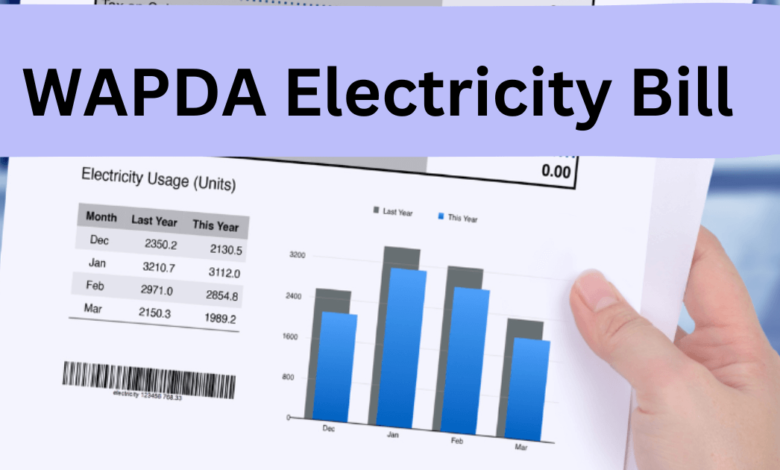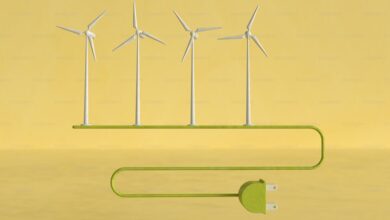EEmpowering Consumers: How to Decode Your Electricity Bill and Energy Habits

It’s a universal experience for homeowners and renters alike: the arrival of the monthly electricity bill. While this routine document is often quickly scanned for the total amount due, a wealth of information lies within those numbers that, when understood, can empower you to make sound energy choices. Let’s deeply dive into your electricity bill, decipher its contents, explore how you can manage and reduce your energy costs effectively, and how to read electricity facts label.
Key Takeaways
- Recognize the significance of understanding each element of your electricity bill.
- Learn how efficiency and renewable energy choices directly affect your expenses.
Table of Contents:
- The Anatomy of an Electricity Bill
- Factors Affecting Your Energy Costs
- Energy Efficiency and Your Electricity Bill
- Renewable Energy Options
- Deciphering the Electricity Facts Label
- Monitoring Your Energy Usage
- Evaluating Energy Providers
- Understanding Bill Increases and Fluctuations
- The Role of Deregulation in Energy Costs
The Anatomy of an Electricity Bill
Every component on your electricity bill serves a specific purpose and provides insight into your energy usage. Terms such as ‘kilowatt-hour (kWh)’ reflect the units of energy you’ve consumed, while ‘demand charges’ relate to the maximum power you’ve needed at any period. Other elements, such as tariffs, detail the policy-driven costs associated with electricity delivery. Each section, outlining usage or detailing additional fees, paints a comprehensive picture of where your energy dollars are going.
Factors Affecting Your Energy Costs
Understanding the components influencing your energy costs is the first step in gaining control. Your usage patterns, such as when you consume the most energy, are crucial. Most utilities charge different rates for electricity use during peak and off-peak hours, knowing this can lead to significant cost savings by shifting high-energy tasks to more economical times of the day. Seasons also affect energy use, with many households experiencing higher bills during extreme weather due to heating or cooling demands. Additionally, local energy rates, which can vary based on fuel costs, infrastructure investments, and utility regulations, directly affect what you pay each billing cycle.
Energy Efficiency and Your Electricity Bill
The efficiency of your appliances and home significantly impacts your electricity bill. An appliance rated with a high energy efficiency consumes less energy while providing the same level of performance as its less efficient counterparts. Upgrades to energy-efficient air conditioning units, refrigerators, and light bulbs might require an initial investment but can lead to substantial reductions in energy use and long-term savings. Beyond appliances, simple acts like sealing drafts around doors and windows, adding insulation, and using programmable thermostats can enhance energy efficiency in the home.
Renewable Energy Options
Progressively, the shift towards renewable energy has become more than an environmental statement. It’s a smart economic choice. Adopting renewable energy sources like solar panels or wind turbines can provide long-term savings and a hedge against future energy rate increases. For many, the upfront costs of installing renewable energy systems can be offset by federal tax credits, local incentives, and the potential to sell excess energy back to the grid. The adoption of renewables goes beyond cost savings, as it also contributes to reducing our carbon footprint and fostering a sustainable future.
Deciphering the Electricity Facts Label
The Electricity Facts Label is akin to a nutrition label for consumers in areas with competitive energy markets. It provides essential information about your electricity plan, including rates, contract terms, and the percentage of renewable energy offered. Analyzing this label allows for comparison shopping among different providers and plans, ensuring you choose the option that matches your energy needs and values.
Monitoring Your Energy Usage
Thanks to technological advancements, today’s consumers have unprecedented access to tools for monitoring their energy usage. Innovations like smart meters and home energy management systems provide real-time data on energy consumption, allowing for adjustments and optimizations to be made on the fly. Such granular data reveals the impact of different appliances and behaviors on your electricity bill, making it easier to identify areas for improvement. Over time, this immediate feedback loop enables consumers to develop energy-efficient habits contributing to lasting reductions in energy costs.
Evaluating Energy Providers
In many areas, consumers have the option to choose their energy provider. This choice comes with the opportunity to assess price plans and rates, provider reputation, and customer service quality. The criteria for an optimal provider include:
- Stability.
- Transparency in billing.
- Customer responsiveness.
- Commitment inquires to sustainable practices.
Before making a switch, consider all these factors and how they align with your preferences and values regarding energy provision.
Understanding Bill Increases and Fluctuations
A spike in your electricity bill can be cause for concern. Several factors could be responsible, including a rate increase if your utility’s costs to generate or purchase electricity rise. Similarly, a surge in consumption, often seen during seasonal temperature extremes when heating and cooling needs are higher, can lead to higher bills. More concerning are billing errors, which, while rare, do occur and warrant scrutiny. If your bill shows an unexpected increase, it is worth delving into the details and contacting your provider for clarification.
The Role of Deregulation in Energy Costs
Deregulation in the energy market has allowed for increased competition and, consequently, more options for consumers. You can shop for energy providers like phone or internet service in deregulated states. While competition can lead to better rates and service, consumers must be more informed to navigate this choice-rich but potentially complex marketplace. It’s essential to keep abreast of how deregulation impacts energy pricing and availability in your area to make the most economically and environmentally advantageous choices.





